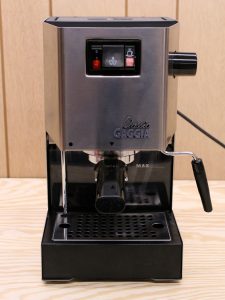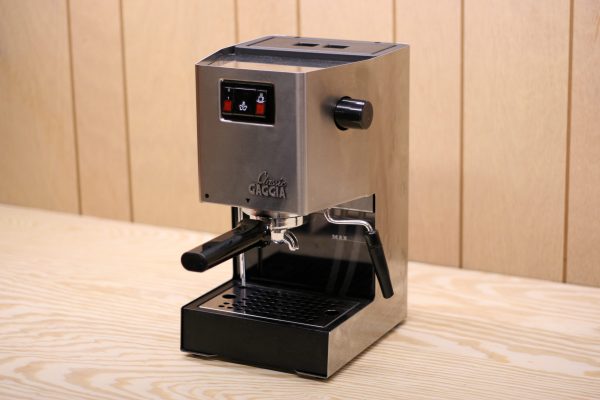
The ability to make good espresso is one of the most coveted skills in the coffee world. The rich body and complex flavor profile of a well-made shot brings the beans to life with a depth that other brewing methods fail to achieve. But espresso is also among the more complicated ways to make coffee. Fine grinds, high pressures, short brew times, metered doses, and precise temperatures all work together to create the perfect shot – but a variation in any one of these variables can just as easily render it undrinkable. Making consistently good espresso requires consistent brewing parameters.
Unfortunately, traditional consumer-grade espresso machines are not very good at keeping water temperature consistent. They typically manage the boiler temperature with thermal cutoff switches, which have a large temperature range, switching off the heater when the temperature reaches the top of the range, and switching back on when it gets to the bottom of the range. This can result in temperature swing of 10°C or more, but espresso requires a precision of at least 1°C for reliable results. Because of this, many home baristas will learn to “temperature surf” by measuring the boiler temperature at various points in the heating cycle and tracking the time after the thermal cutoff switch turns off to hit their desired brew temperature. This technique is very tedious to execute correctly and is subject to variations in individual machines and environmental conditions.
The best way to keep the boiler temperature consistent is by implementing a PID control algorithm, which is designed to optimally regulate temperature and can easily achieve sub-degree accuracy. There are many commercial PID controllers available on the market, but they each have drawbacks such as size, cost, and customizability. To overcome these hurdles and create a solution that meets our temperature control needs, Protofusion has developed a tiny open-source PID controller called Therm.
Therm uses a thermocouple to measure temperature and has a digital output that can be paired with a solid state relay (SSR) to control heating elements or other thermal devices. Because the software is open source, it is easy to add new parameters, control strategies, and features. For this project, we will use Therm to control the boiler temperature of the Gaggia Classic espresso machine and configure the software to read in the state of the switches on the front of the machine to select between brew and steam temperatures. This seamless integration will preserve the existing machine interface and aesthetic while providing the benefits of precise and stable PID-controlled boiler temperatures.
Start to finish, it took me about 2 hours to complete this project. I would imagine the whole thing could be achieved in an afternoon by anyone comfortable around tools and with basic soldering experience.
Schematics
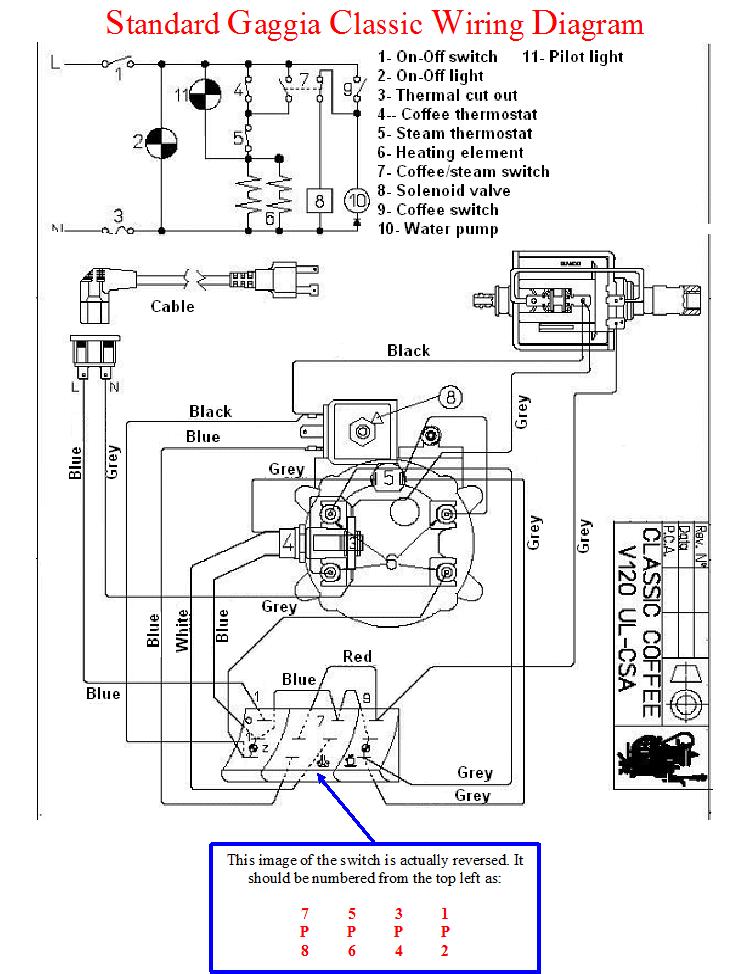
Above is the schematic and wiring diagram for an unmodified Gaggia Classic machine. This is the starting point for the modifications we’ll make, and we’ll try to leave as much of the system as possible undisturbed. In fact, if you follow the directions here, it should be very easy to revert the machine back to the stock configuration.
The first addition to the system is a Therm module to act as the new brains of the machine. Therm runs on a 5V power supply, which doesn’t exist in the stock machine, so we’ll need to add that too. To measure the temperature of the boiler, we’ll need to add a thermocouple. We also want to remove the old thermal cutoff switch that was used to control the brew temperature. Physically removing the cutoff switch is not strictly required, but it leaves a nice place to install the thermocouple, so I would recommend it. Either way, we’ll want to take it out of the circuit and replace it with a solid state relay. The SSR will turn on and off to regulate the temperature just like the cutoff switch did, but it will be controlled by Therm rather than a mechanical thermal mechanism.
Next, we need a way to tell Therm whether the machine is in brew mode or steam mode, so it can set the temperature setpoint accordingly. In the stock machine, the steam selector switch on the front panel is used to bypass the brew cutoff switch, which will allow the temperature to go up to the limit imposed by the steam cutoff switch. But now, we want Therm to control the temperatures and not the cutoff switches. To do that, we’ll disconnect the steam selector switch from the cutoff switch, and instead, connect it to an input on Therm.
I decided to leave in the steam cutoff switch because it will help protect the boiler from getting too hot. The machine also has a thermal fuse that will trigger if everything else fails, but since it is a single-use fuse, I didn’t want to risk blowing it while I was tuning my Therm settings. I did, however, decide to upgrade my steam cutoff switch with a 155°C replacement, which should help the machine deliver a larger volume of steam from the boiler compared to the stock 145°C cutoff. This upgrade is completely optional as it doesn’t directly influence the PID control system, but it may be worth considering since you already have the machine open.
Below is an updated schematic which shows all of the changes we want to make to the system. Next, we’ll look at the specific parts we’ll need and then go through each step required to complete the modification.
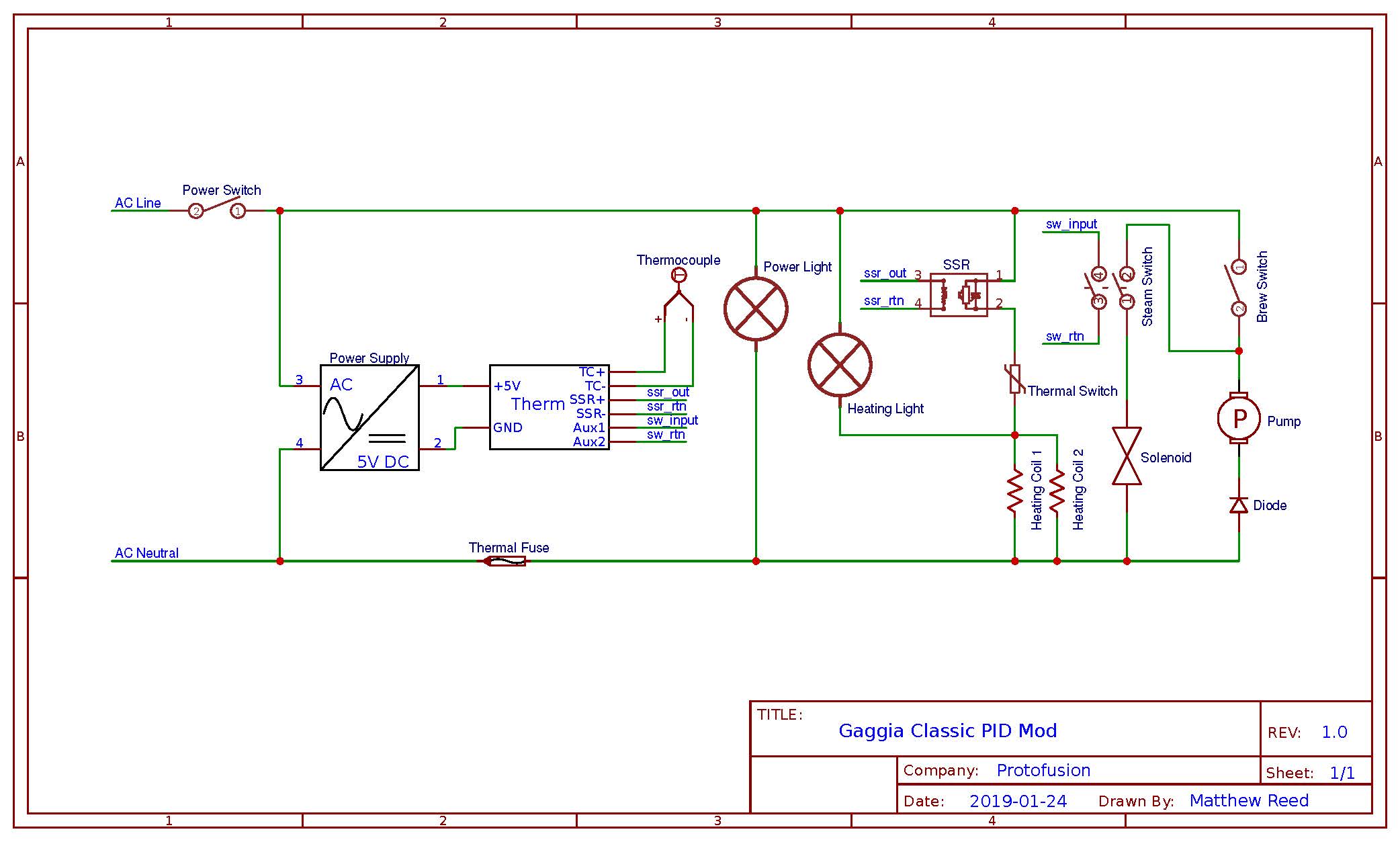
Parts List
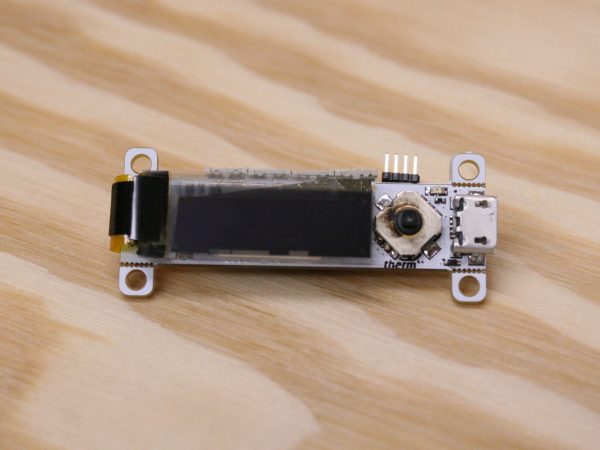
Therm: Therm is a open source PID temperature controller created by Protofusion. Unfortunately, it is not currently available for sale, but since it’s completely open source, you’re welcome to download the design files and fabricate one yourself!
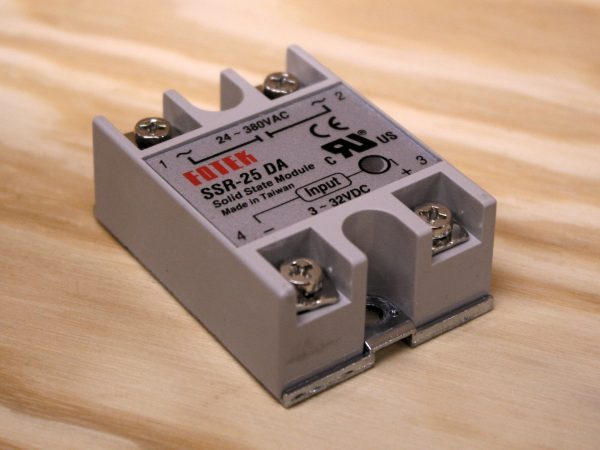
Solid State Relay: SSRs can be cheaply sourced from places like eBay, but be careful not to skimp on this part. The Gaggia Classic has a max power consumption of more than 1400W, which can easily burn up a cheap SSR. If the brand or source is questionable, I would recommend derating the current by a factor of 2 or 3 and going for a model rated for 25-40A just to be safe.
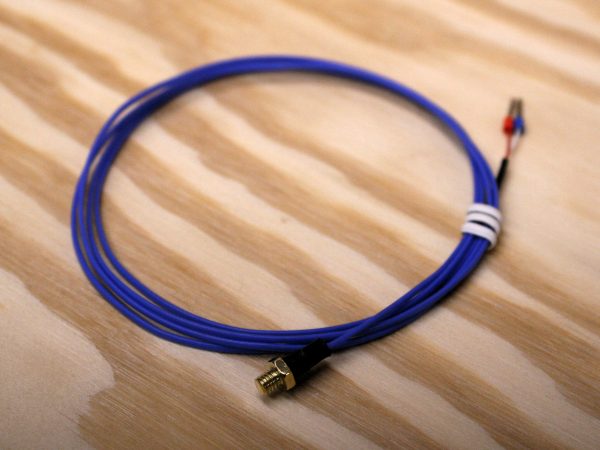
Thermocouple: Thermocouples are used to precisely measure temperature. They come in all shapes and sizes for many different applications and can have a wide range of price points. Fortunately, several popular low-cost 3D printers use a thermocouple with an M4 thread that perfectly matches the thread of the thermal cutoff switch we are removing, making it easy to find and a perfect drop in replacement for this modification.
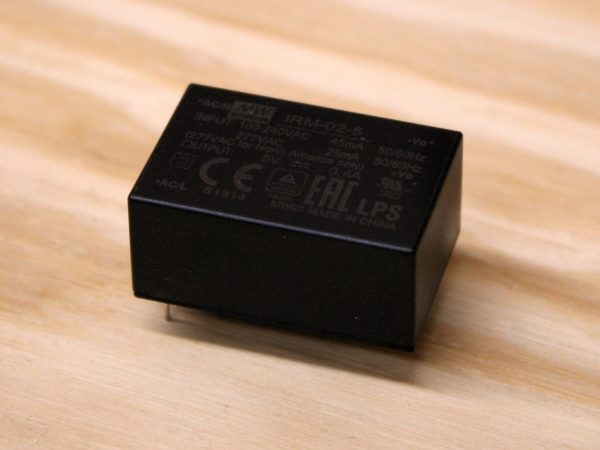
Power Supply: The Therm PID temperature controller needs a 5V power supply, but the only power available in the stock machine is 120V AC. Just about any AC to 5V power supply will work, since Therm doesn’t consume much power, but I chose this MeanWell module for its low cost, small form factor, and easy connection points. A basic USB phone charger would also work well if you have an old one laying around.
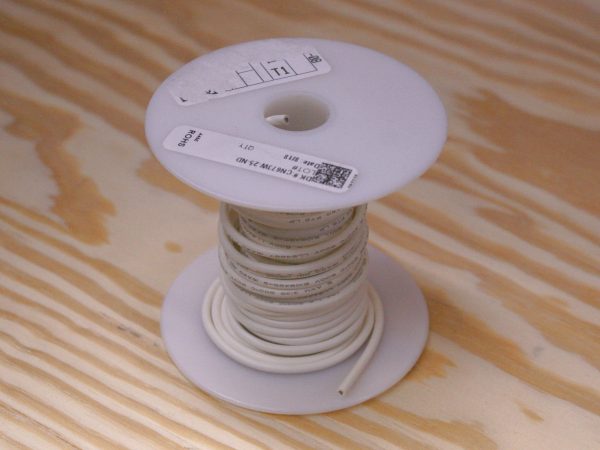
High Temp Wire: Wire rated for high temperatures is a good idea for this modification because the inside of an espresso machine can get hot enough to melt standard wire insulation. I chose wire with silicone insulation and a 200°C rating. You’ll need some relatively heavy gauge wire for wiring the heaters, but the signal wires for the SSR control and steam selection switch can be much smaller. I used 16 gauge wire for the high power lines and 22 gauge wire in red, blue, and black for the low power circuits.
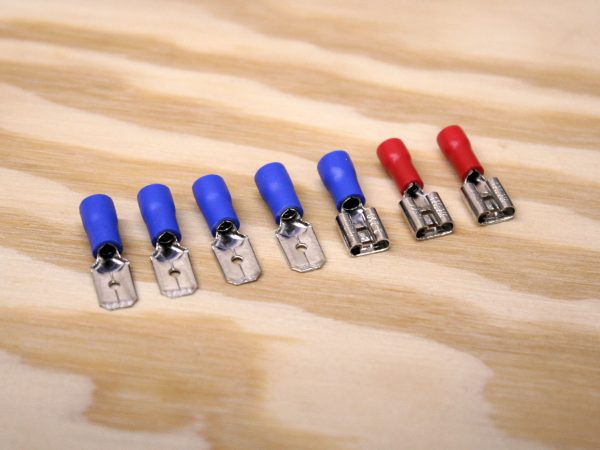
Spade Connectors: Spade-style quick connect terminals are used in the stock espresso machine wiring, and it’s nice to be able to plug the new circuit additions directly into the existing harness connectors. This isn’t strictly required, and there are plenty of other ways to create electrical connections, including splices, solder joints, and different connector styles.
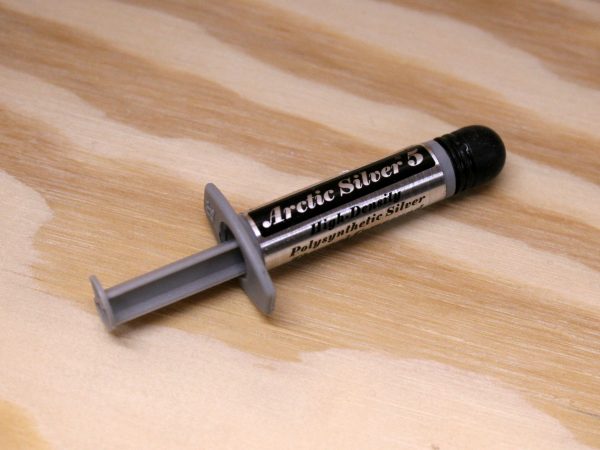
Thermal Paste: Thermal paste is used to improve heat transfer. In this case, we want temperature changes in the boiler to influence the thermocouple as quickly as possible. While not absolutely necessary, a dab of thermal paste will help to improve the accuracy and response time of the temperature measurements. (Any old thermal paste will work well – Arctic Silver is definitely overkill, but it’s what I had on hand.)
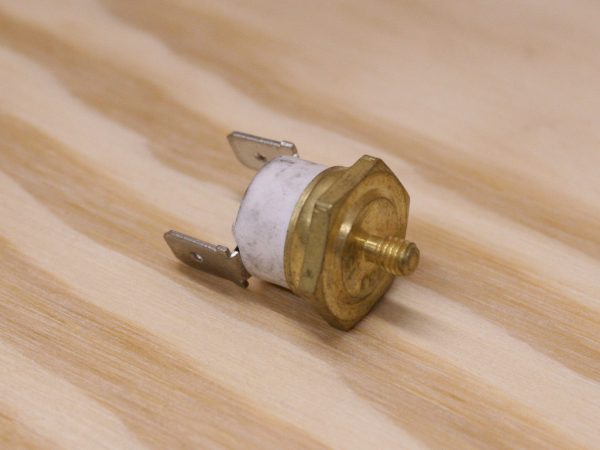
155°C Thermal Cutoff Switch (Optional): The stock machine comes with a 145°C thermal cutoff switch for steam temperature, which restricts the amount of steam that can be made in the small boiler. Upgrading to a 155°C cutoff should significantly improve the available steam volume.
Required Tools
- Screw drivers
- Adjustable wrench or wrench set
- Wire cutters
- Crimpers or pliers
- Soldering iron
Detailed Steps
Here are more detailed instructions on making the modifications step by step:
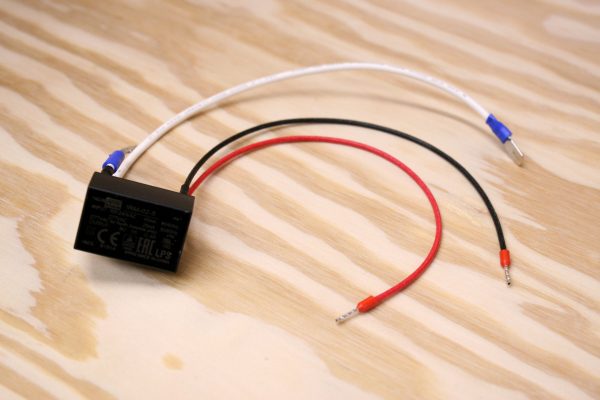
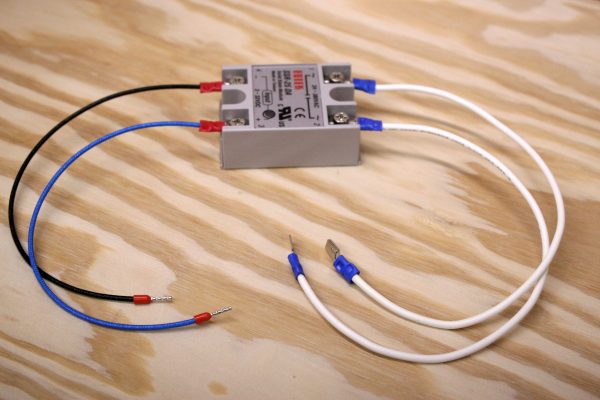
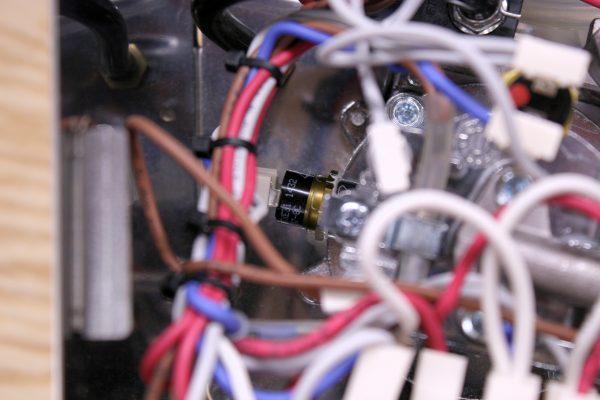
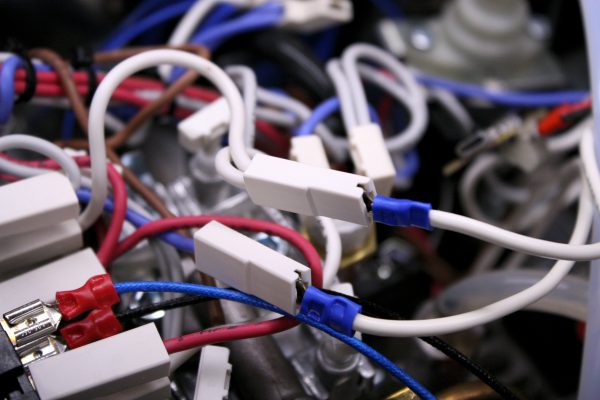
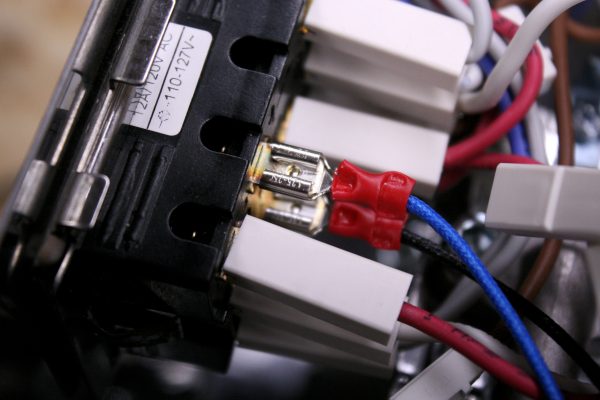
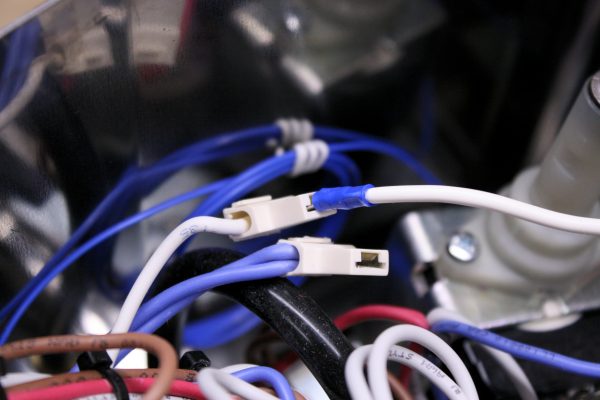
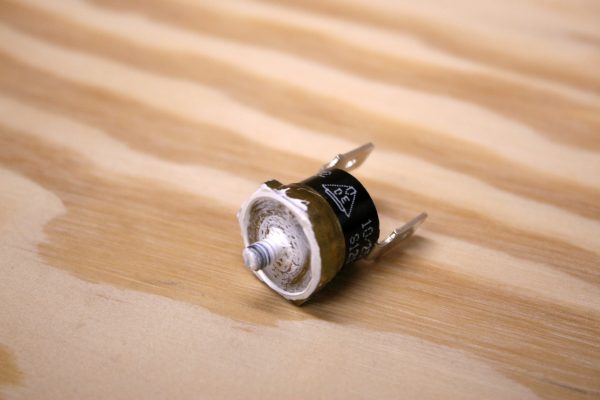
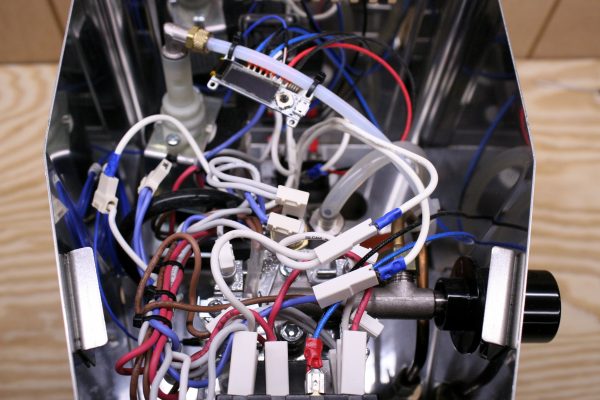
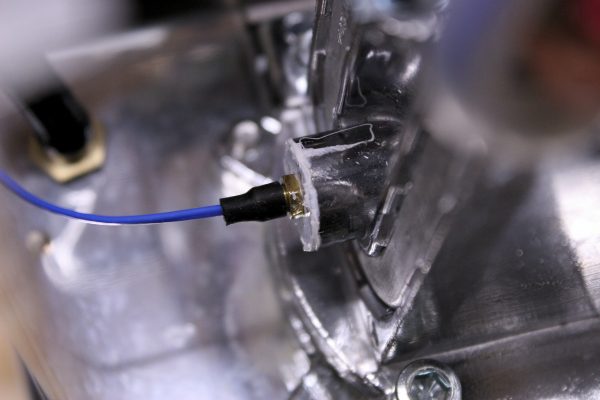
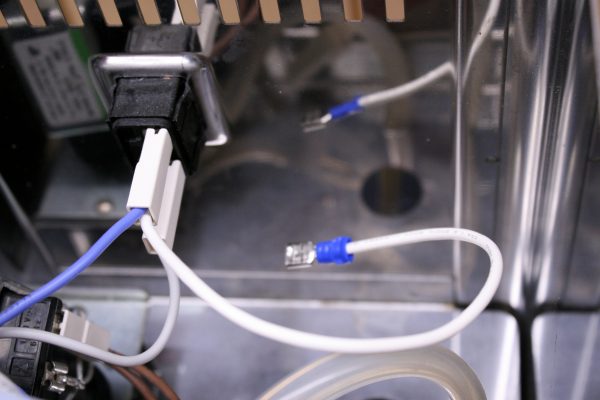
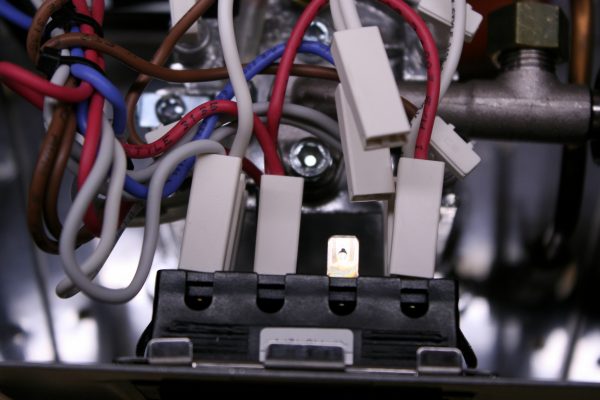
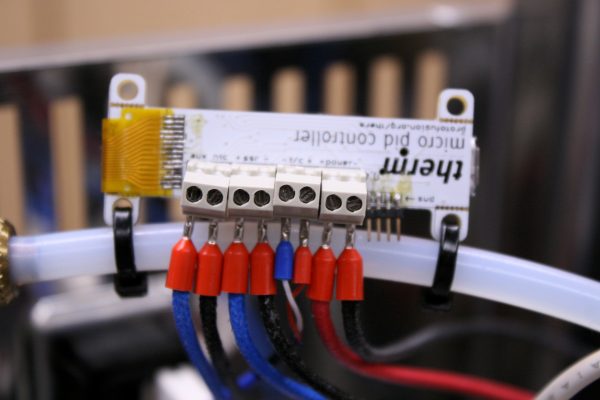
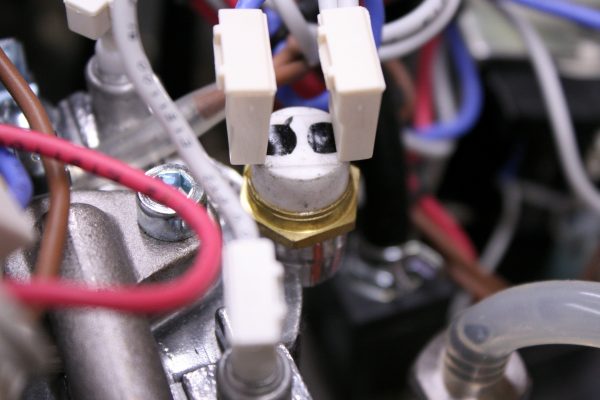
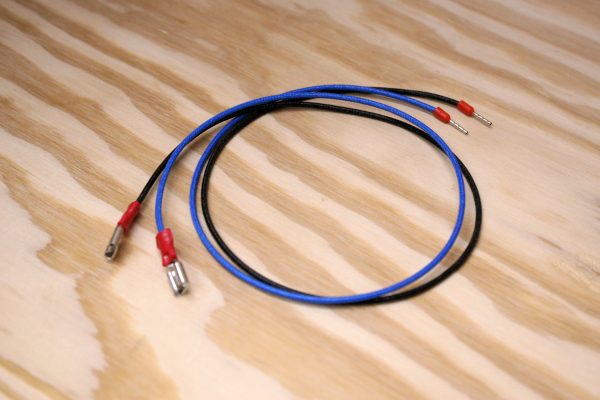
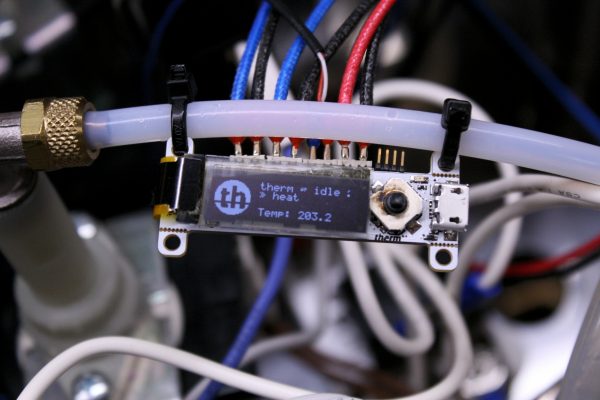
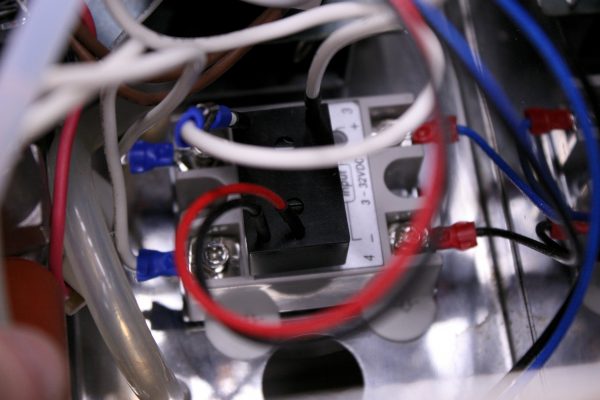
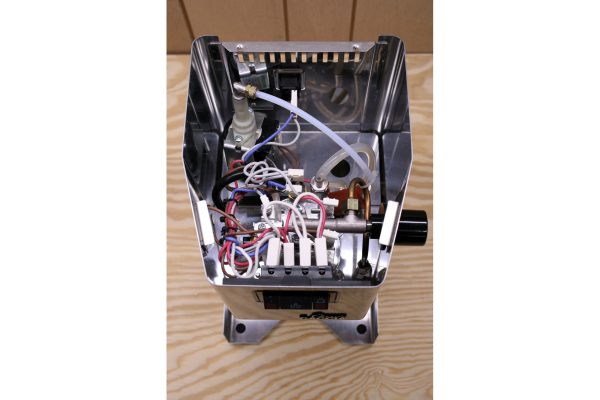
- Open up the machine: Remove the two screws along the back of the top cover and take off the cover, along with the water funnel.
- Remove brew cutoff switch: The brew thermal cutoff switch is located on the side of the boiler, opposite the steam knob. It’s threaded into a mounting hole and you might see some some white/gray thermal paste coming out around the edges. Disconnect the spade connectors plugged into it, and use a wrench to back it out.
- Install thermocouple: The thermocouple in the parts list has an M4 thread to match the cutoff switch thread, so installing the thermocouple is as easy as screwing it into the open hole. A bit of thermal paste on the tip before installing is recommended, but not required, especially if there’s lots of thermal paste left from old switch.
- Replace steam cutoff switch (optional): If you opted to upgrade the steam thermal cutoff switch, you can swap that out now. The steam cutoff is found on the top of the boiler, and looks just like the brew switch. Make sure you reconnect the wires once the new device is installed.
- Disconnect steam switch on front panel: The steam switch is double pole, which means it has two separate circuits running through it. We only want to disconnect the side that goes to the heater coil, which is the side closer to the brew switch. Disconnect both the top and bottom connectors. In my machine, the top connector had two gray wires and the bottom one had a single blue wire.
- Wire up and connect SSR: Use the heavy gauge wire to add leads to the SSR output side and terminate them with male spade connectors. Since the SSR takes the place of the front panel steam switch in this circuit, we’ll want to connect the output directly to the wires we just unplugged from the front switch. Plug the male spades into the female connectors from the front panel switch. Add wires (thinner wire is fine) to the SSR +/- input to connect to Therm.
- Wire up power supply: The 5V power supply needs to connect to the AC power coming into the machine, preferably after the power switch. For the AC hot connection, I used the connectors that were unplugged from the brew thermal cutoff switch (on mine, the hot side had a single gray wire). For the neutral connection, I spliced a wire with a connector into the neutral line going out to the power plug. Wire up the power supply and connect the AC hot/neutral to the machine, leaving 5V wires ready to connect to Therm.
- Wire up and install Therm: Use female spade connectors and the thinner wire to connect the front panel steam selection switch to the Therm aux pins. Also connect the thermocouple, SSR input, and 5V lines to the matching Therm ports. I used ferrules to terminate the wires going to the Therm screw terminals, but bare wires would also work just fine.
- Reassemble the machine: Double check that all of the wires are hooked up, and then replace the top cover and the water funnel, along with the screws that were removed during disassembly.
Conclusion
You’ll be amazed at how consistent the Gaggia Classic can be in creating repeatable shots when the boiler temperature is stable. PID temperature control allows you to focus on the art of pulling a good shot, instead of constantly worrying about fluctuating brew temperatures.
